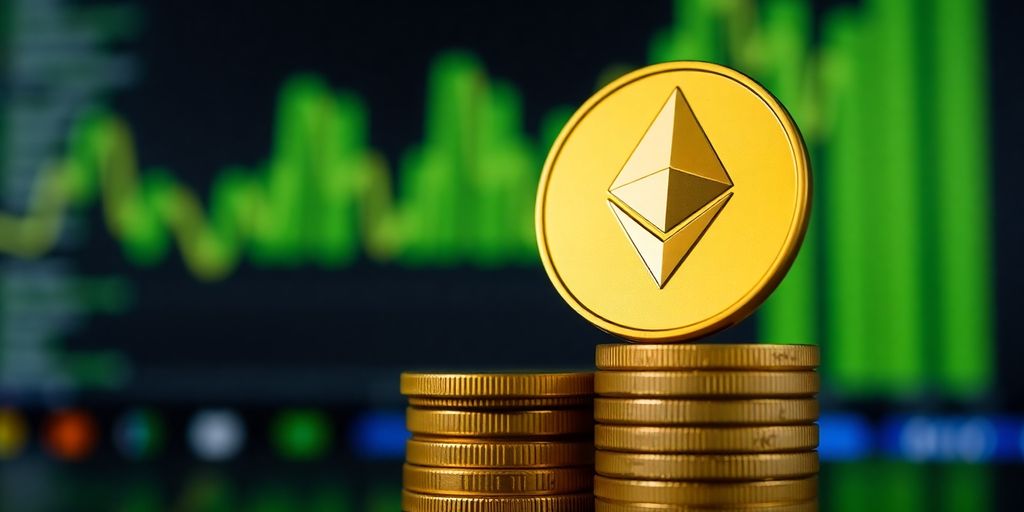Ethereum’s gas limit is a bit like the rules of the road for the blockchain world. It keeps things from getting out of hand and makes sure everyone gets a fair shot at using the network. Just like you wouldn’t want one car to hog the whole highway, Ethereum doesn’t want one contract to use up all the resources. This helps keep everything running smoothly and securely. But what happens when we start playing with these limits? Increasing the gas limit can speed things up, but it also comes with its own set of challenges. Let’s take a closer look at what’s at stake when we tweak these settings.
Key Takeaways
- Ethereum’s gas limit is crucial for keeping the network balanced and fair.
- Boosting gas limits can speed up transactions, but might lead to higher fees.
- Setting the right gas limit is like budgeting your expenses on the blockchain.
- Tools like Etherscan and Metamask help users manage their gas limits effectively.
- Understanding gas limits is key to successful and cost-effective Ethereum transactions.
Understanding Ethereum’s Gas Limits
Defining Gas Limits in Ethereum
In the Ethereum network, the concept of a gas limit is like setting a cap on the amount of fuel you’re willing to use for a transaction. This limit determines the maximum amount of computational effort you’re willing to spend to execute a transaction or a smart contract. Gas, in Ethereum, acts as the fee for processing transactions, ensuring that each operation pays for the computational resources it uses. Think of gas as the energy required to perform actions on the blockchain, and the gas limit as the maximum energy you’re willing to expend.
The Role of Gas in Transactions
Gas plays a vital role in Ethereum transactions. Every action, whether sending Ether or running a smart contract, requires gas. This ensures that the network can function smoothly by allocating resources efficiently. When you set a higher gas limit, it indicates that you’re willing to pay more for faster processing, as miners are incentivized to prioritize higher-paying transactions. It’s like tipping a server more to get quicker service. However, setting the gas limit too high can lead to unnecessary expenses, while setting it too low might cause your transaction to get stuck.
Gas Limits and Network Security
Gas limits are crucial for maintaining Ethereum’s network security. They prevent any single transaction from consuming too much of the network’s resources, which could lead to congestion or even exploitation through infinite loops. By capping the gas usage per block, Ethereum ensures that the network remains stable and secure. This mechanism acts as a safeguard, similar to setting speed limits on a highway to prevent accidents and ensure smooth traffic flow. The community is actively discussing a proposed increase in gas limits, weighing the potential benefits against the risks to network stability.
Impacts of Increasing Gas Limits

Transaction Speed and Efficiency
When we talk about increasing Ethereum’s gas limits, one of the first things that comes to mind is the potential boost in transaction speed. Higher gas limits can incentivize miners to prioritize your transaction, much like offering a bigger tip to a waiter for faster service. This is because miners, who are responsible for validating and adding transactions to the blockchain, tend to favor transactions with higher gas fees, as they promise greater rewards. Thus, raising the gas limit can lead to quicker transaction confirmations, a win-win for both users and miners.
Balancing Network Load
With increased gas limits, there’s a balancing act that comes into play. The network has to manage a larger volume of transactions, which can lead to congestion if not handled properly. Think of it like a busy highway; more lanes can mean smoother traffic flow, but only if the infrastructure supports it. If the network can’t handle the increased load, it might slow down or become less efficient. This is why raising the gas limit for Ethereum blocks must be done with caution, ensuring that the network’s performance remains stable and secure.
Potential for Increased Fees
While higher gas limits can speed up transactions, they also come with the potential for increased fees. As demand for faster processing grows, so does the competition among users willing to pay more for quicker service. This can drive up the cost of transactions, making it more expensive for everyone on the network. It’s like a bidding war for limited resources, where only those willing to pay the most get the quickest results. Therefore, it’s crucial to consider these implications when deciding on gas limits, as they directly affect transaction costs.
Setting Appropriate Gas Limits
Factors Influencing Gas Limit Decisions
When it comes to setting gas limits on the Ethereum network, the type of transaction is a primary consideration. For simple transfers of Ether from one wallet to another, the standard gas limit is typically set at 21,000 units. This is usually sufficient for basic transactions. However, more complex activities, like interacting with smart contracts, require higher gas limits. Smart contracts involve more computational steps, so it’s wise to allocate extra gas to ensure smooth execution.
Another factor is network congestion. During peak times, when many users are trying to process transactions simultaneously, the network can become clogged. In these situations, setting a higher gas limit can help ensure your transaction gets priority, albeit at a higher cost.
Common Mistakes to Avoid
One common mistake is setting the gas limit too low. This can result in failed transactions, where the operation doesn’t complete, but you still lose the gas fee. It’s like trying to drive a long distance with just enough fuel to get halfway. On the flip side, setting the gas limit excessively high can also be wasteful, as you’ll end up paying more than necessary if the transaction doesn’t require that much gas.
Best Practices for Users
To avoid these pitfalls, users should consider using tools like Etherscan or Metamask, which offer real-time gas limit recommendations based on current network conditions. These platforms can help you customize gas settings for your transactions, allowing you to balance speed and cost effectively. Additionally, keeping an eye on network trends can provide insights into the best times to transact, potentially saving you money on fees.
Setting the right gas limit is like filling your car’s tank with just enough fuel for your journey—not too much, not too little. It ensures that your transactions are processed smoothly without wasting resources.
The Importance of Gas Limits in Smart Contracts

Gas Consumption in Contract Execution
When we talk about smart contracts on the Ethereum network, understanding gas is a must. It’s like the fuel needed for your car to run; without it, you’re not going anywhere. Each operation in a smart contract consumes a certain amount of gas, which measures the computational effort required. Setting the right gas limit ensures that contracts execute smoothly without interruption. If the gas limit is set too low, the contract might run out of gas, leading to failed transactions and wasted fees. This is why developers must carefully estimate the gas needed for their contracts.
Avoiding Infinite Loops
One of the risks in smart contract development is the potential for infinite loops, which can drain all the gas and halt execution. By setting a sensible gas limit, we can prevent contracts from getting stuck in endless cycles. This acts as a safeguard, ensuring that even if a loop is unintentionally created, it won’t consume all available resources. Developers should include checks and balances in their code to avoid such scenarios.
Testing and Optimization Strategies
Before deploying smart contracts, thorough testing is key. Developers should simulate different scenarios to estimate gas consumption accurately. Optimization is another crucial step; by refining code to be more efficient, we can reduce gas usage significantly. Here are some strategies to consider:
- Use efficient data structures: Choosing the right data structures can minimize gas costs.
- Minimize storage operations: Storage is expensive in terms of gas, so limit its use.
- Batch operations: Grouping transactions can save gas by reducing the number of operations.
Testing and optimizing smart contracts not only saves on gas fees but also ensures robust performance in a live environment.
Navigating Network Congestion
Understanding Traffic Patterns
When the Ethereum network gets busy, it’s like trying to drive through rush hour traffic. Transactions can slow down, and fees can skyrocket. This happens because everyone is trying to get their transactions processed at the same time, leading to congestion. Miners, who process these transactions, prioritize those with higher gas fees because they want to maximize their rewards. It’s like paying a toll to use the fast lane on a highway. Understanding these patterns helps us plan our transactions better and avoid high fees during peak times.
Strategies for Faster Transactions
To beat the congestion, we can:
- Increase the Gas Limit: By offering a higher gas limit, we can incentivize miners to prioritize our transactions.
- Time Your Transactions: Try to send transactions during off-peak hours when the network is less busy.
- Use Gas Estimation Tools: Platforms like Etherscan and Metamask provide real-time gas fee suggestions based on current network conditions.
The Role of Miners in Gas Prioritization
Miners play a crucial role in how transactions are prioritized. They choose transactions that offer higher fees first, just like a taxi driver might prefer a passenger who offers a better fare. This system ensures that miners are compensated for their work, but it also means that during times of high demand, users need to be strategic about the gas fees they offer. By understanding gas fees on the Ethereum network, we can better navigate these challenges and ensure our transactions are processed efficiently.
Tools for Managing Gas Limits

Recommended Platforms for Users
Managing gas limits on Ethereum can be tricky, especially with fluctuating network conditions. Fortunately, there are several tools that help us navigate these complexities. Platforms like Etherscan and Metamask offer real-time recommendations based on current network congestion. They provide insights into the optimal gas limits, helping us strike a balance between transaction speed and cost. For instance, during busy periods, these platforms might suggest a higher gas limit to ensure transactions are processed quickly.
Real-Time Gas Limit Suggestions
Real-time suggestions are invaluable for anyone transacting on Ethereum. These tools monitor network traffic and adjust their recommendations accordingly. By using these platforms, we can avoid overpaying for gas during low traffic times or having transactions stuck during high congestion. This dynamic approach not only saves money but also ensures our transactions are completed efficiently.
Integrating Tools into Your Workflow
Incorporating gas management tools into our daily workflow can significantly improve our Ethereum experience. Start by regularly checking platforms like Etherscan for gas price updates before initiating transactions. Also, consider using browser extensions or mobile apps that provide instant notifications about gas price changes. By integrating these tools, we can make informed decisions and optimize our transaction strategies effectively.
Managing Ethereum’s gas limits doesn’t have to be daunting. With the right tools and a bit of practice, we can make our transactions more cost-effective and timely, even during periods of network congestion. Remember, it’s not just about setting a limit; it’s about setting the right limit for the right time.
Consequences of Incorrect Gas Limits
Risks of Setting Limits Too Low
We’ve all been there—setting a gas limit too low and watching as our transaction just sits there, pending, maybe forever. When the gas limit is insufficient, the transaction fails, and we lose out on the gas fee without achieving anything. It’s like paying for a service that never gets delivered. This is especially frustrating when network congestion is high, as miners prioritize transactions that offer higher fees. Here’s a quick look at what happens:
- Transaction Failure: The transaction doesn’t complete, and you’re still charged the fee.
- Stuck Transactions: Your transaction could hang indefinitely, waiting for miners to pick it up.
- Increased Costs: Repeated attempts to resend the transaction can add up quickly.
Implications of Excessive Gas Limits
On the flip side, setting your gas limit too high isn’t without its downsides. While it might seem like a good idea to ensure your transaction goes through, you could end up overpaying. If the actual gas used is less than what you set, the excess isn’t refunded. Imagine filling your car’s tank more than needed and just spilling the extra fuel—wasteful, right?
- Unnecessary Costs: You might end up spending more than necessary.
- Budget Mismanagement: Misallocating funds for gas can affect your overall budget.
- Network Inefficiency: Excessive limits can contribute to network congestion.
Impact on Transaction Success Rates
Incorrect gas limits directly affect whether your transaction gets confirmed or not. Transactions with well-set gas limits are more likely to be processed efficiently. This is where tools like Metamask and Etherscan can help, offering guidance based on current network conditions. By using these tools, we can better navigate the complexities of Ethereum transactions.
Setting the right gas limit is a balancing act—too low, and you risk failure; too high, and you waste resources. It’s about finding that sweet spot where efficiency meets cost-effectiveness.
Ethereum’s EIP-1559 and Gas Management
In August 2021, Ethereum introduced the Ethereum Improvement Protocol (EIP) 1559, which changed the way gas fees are structured. Before this upgrade, users had to bid on gas prices, leading to unpredictability and sometimes exorbitant fees. EIP-1559 introduced a base fee that adjusts automatically based on network congestion. This base fee is burned, reducing the total supply of Ethereum, and users can add a priority fee to incentivize faster processing of their transactions.
Effects on Gas Fees and Limits
EIP-1559 aims to make gas fees more predictable. Instead of the old auction-style system, the base fee provides a clearer picture of what fees to expect. This change doesn’t necessarily make transactions cheaper but does help in avoiding sudden spikes in costs. The base fee adjusts dynamically, increasing when blocks are overused and decreasing when they’re underused, thus stabilizing the network’s fee structure.
User Experience Improvements
For the average user, EIP-1559 has simplified the transaction process. No longer do users need to guess the right gas price to pay. With the base fee, there’s a standard cost, and the optional priority fee allows users to choose how quickly they want their transactions to be processed. This has made the Ethereum network more user-friendly, especially for those new to cryptocurrencies.
With EIP-1559, Ethereum has taken a significant step towards enhancing transaction transparency and efficiency, creating a more stable environment for users and developers alike.
Future Trends in Gas Limit Adjustments

Predictions for Ethereum’s Evolution
Ethereum is always changing, and gas limits are a big part of that. We expect to see more adjustments to handle the growing number of users and transactions. As Ethereum scales, the network might increase gas limits to allow more complex operations. This could mean faster transactions and more capabilities for developers. But, there’s always a risk of higher fees if the demand grows too fast.
Potential Upgrades and Their Impacts
Upcoming upgrades could change how we think about gas limits. For instance, improvements in storage, bandwidth, and computation could make it easier to handle more data, leading to higher gas limits. But, these upgrades need careful planning to avoid overloading the network. It’s like upgrading your computer; you want more power without crashing it.
Community Insights and Feedback
The Ethereum community plays a crucial role in shaping gas limit trends. Developers and users often share their experiences and suggestions, which can influence future changes. Listening to this feedback helps ensure that any adjustments are beneficial for everyone involved. It’s a team effort to keep Ethereum running smoothly, balancing innovation with practical needs.
As we look ahead, it’s clear that gas limits will continue to evolve with Ethereum. Staying informed and engaged with the community can help us navigate these changes effectively, ensuring that we all benefit from the network’s growth.
Conclusion
In the ever-evolving world of Ethereum, the gas limit stands as a crucial element that both users and developers must understand. It’s not just a technical detail; it’s a key player in how transactions are processed and how costs are managed. By setting the right gas limit, users can ensure their transactions are completed efficiently without overspending on fees. Meanwhile, developers can optimize smart contract executions, avoiding unnecessary costs and ensuring smooth operations. As Ethereum continues to grow and adapt, staying informed about gas limits will empower users to make smarter decisions, whether they’re sending a simple transaction or deploying complex smart contracts. In this dynamic landscape, knowledge truly is power.
Frequently Asked Questions
What is Ethereum’s gas limit?
Ethereum’s gas limit is like a cap on how much work a transaction can do. It helps keep the network from getting overwhelmed by any single task.
Why is setting the right gas limit important?
Setting the right gas limit is crucial because it ensures your transaction goes through without wasting money or failing due to lack of gas.
How does increasing the gas limit affect transaction speed?
Raising the gas limit can make your transaction faster because miners prefer transactions with higher gas limits for better rewards.
What happens if I set the gas limit too low?
If the gas limit is too low, your transaction might not go through, and you’ll lose the fee you paid for it.
Can setting a high gas limit lead to higher fees?
Yes, setting a high gas limit can result in paying more fees than necessary, especially if you don’t use all the gas.
How do gas limits help with network security?
Gas limits protect the network by preventing any single transaction from using too many resources, which keeps the system fair and balanced.
What tools can help me manage gas limits?
Tools like Etherscan and Metamask can suggest gas limits based on current network conditions, helping you balance speed and cost.
What is the impact of Ethereum’s EIP-1559 on gas management?
EIP-1559 changed how gas fees work by introducing a base fee and optional tip, helping users predict costs and manage gas more effectively.





